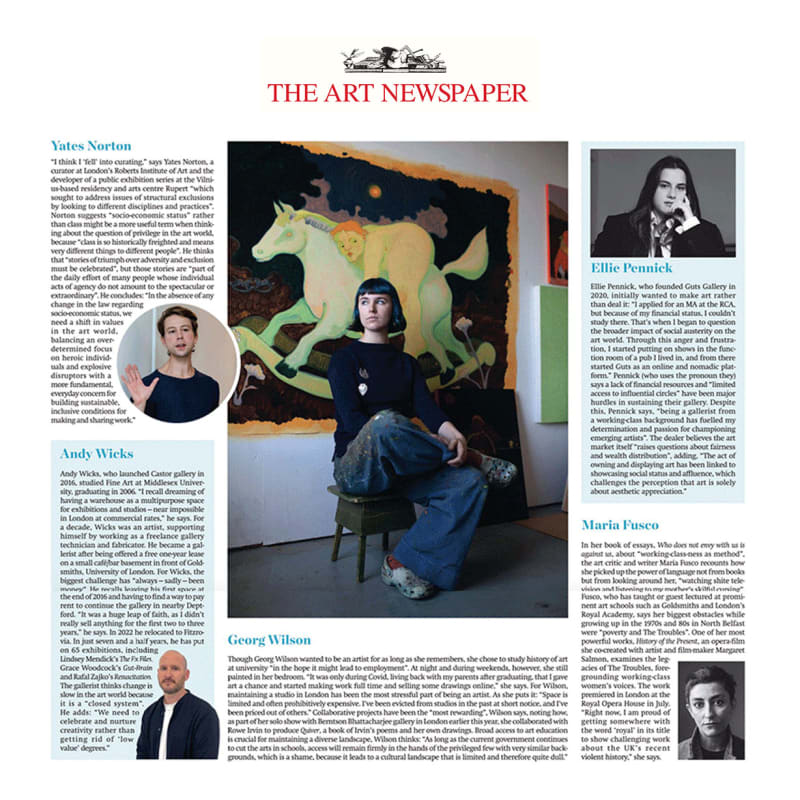Though Georg Wilson wanted to be an artist for as long as she remembers, she chose to study history of art at university “in the hope it might lead to employment”. At night and during weekends, however, she still painted in her bedroom. “It was only during Covid, living back with my parents after graduating, that I gave art a chance and started making work full time and selling some drawings online,” she says. For Wilson, maintaining a studio in London has been the most stressful part of being an artist. As she puts it: “Space is limited and often prohibitively expensive. I’ve been evicted from studios in the past at short notice, and I’ve been priced out of others.”
Collaborative projects have been the “most rewarding”, Wilson says, noting how, as part of her solo show with Berntson Bhattacharjee gallery in London earlier this year, she collaborated with Rowe Irvin to produce Quiver, a book of Irvin’s poems and her own drawings. Broad access to art education is crucial for maintaining a diverse landscape, Wilson thinks: “As long as the current government continues to cut the arts in schools, access will remain firmly in the hands of the privileged few with very similar backgrounds, which is a shame, because it leads to a cultural landscape that is limited and therefore quite dull.”


